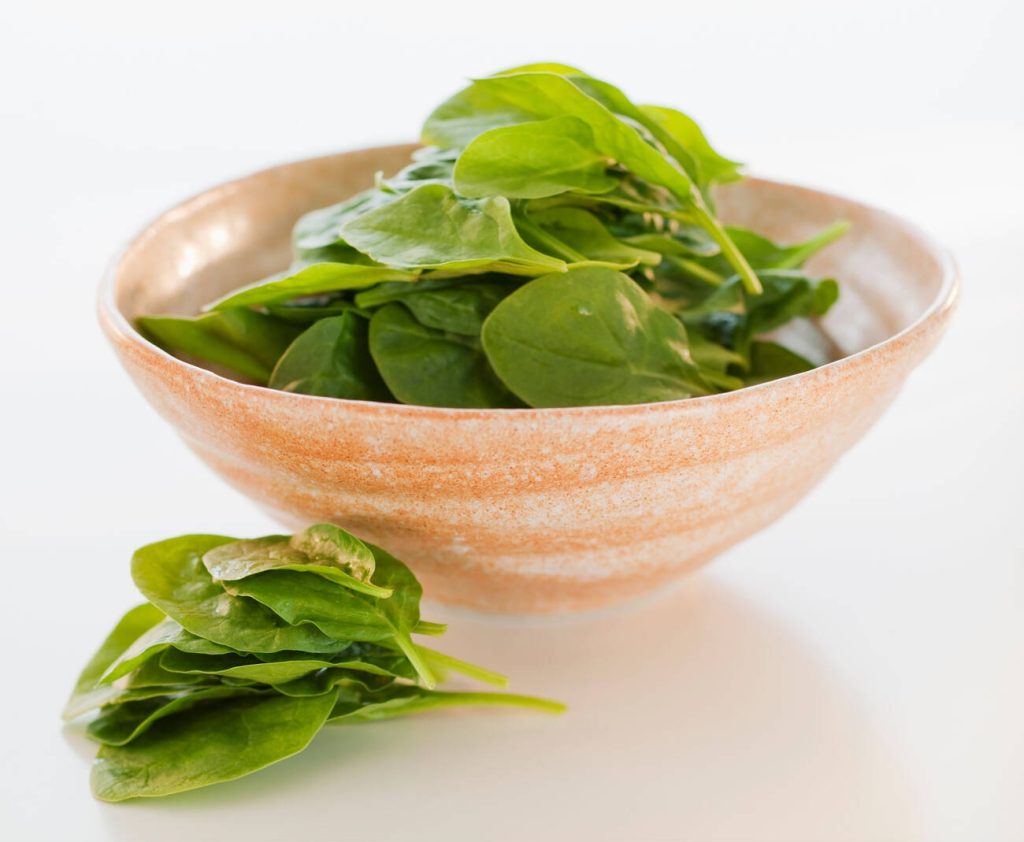Do you believe that spinach is a great source of iron? Well, here’s the truth: most of the iron content in spinach is useless for your body. Contrary to popular belief, spinach’s high iron reputation is actually a myth. While it does contain a fair amount of iron, it’s mainly non-haem iron which isn’t easily absorbed by your body. Only about 1.7% gets absorbed compared to 20% from beef steak! But don’t worry, there are still other nutritional benefits that make spinach worth eating.
The Iron Myth
The iron myth surrounding spinach’s high iron content is based on a misplaced decimal point in a scientific paper. It all started when someone mistakenly overestimated the iron content of spinach by a factor of ten. This error led to the belief that spinach was an excellent source of iron, and even influenced popular culture, with the cartoon character Popeye being associated with this misconception. However, it has been proven that spinach actually contains only about 2.6 milligrams of iron per 100 grams. While this is higher than many other vegetables, the type of iron in spinach, known as non-haem iron, is not easily absorbed by the body. So, despite its reputation for being rich in iron, spinach may not be as beneficial for boosting your iron levels as you might think.
Iron Content in Spinach
Did you know that the iron in spinach is not easily absorbed by your body? Despite its reputation as a good source of iron, there are a few things you should know about spinach and its iron content:
- Spinach contains approximately 2.6 milligrams of iron per 100 grams, which is higher than many other vegetables.
- However, the iron in spinach is non-haem iron, which is not easily absorbed by the body.
- Only about 1.7% of the non-haem iron in spinach is absorbed when consumed.
Factors Affecting Iron Absorption
One factor that can impact the absorption of non-haem iron in spinach is the presence of polyphenolic compounds. These compounds bind to iron and form insoluble compounds, reducing the amount of iron available for absorption. So even though spinach contains a relatively high amount of iron, only about 1.7% of the non-haem iron in spinach is absorbed when consumed. In comparison, approximately 20% of the iron in beef sirloin steak is absorbed by the body. This means that most of the iron content in spinach is essentially useless for meeting your body’s iron needs. It’s important to consider other sources of easily absorbable iron, such as meat or seafood, if you’re looking to increase your dietary intake.
Other Nutritional Benefits of Spinach
Another reason to include spinach in a balanced diet is its high vitamin A content. Spinach is packed with carotenoids, such as beta-carotene, which are essential for healthy eyesight and a strong immune system. These compounds act as precursors to vitamin A in the body, providing numerous benefits. Additionally, spinach is not just rich in iron but also contains other important nutrients like folate and vitamin K. Despite the misconception about its iron content, spinach remains a valuable addition to your meals due to its nutritional profile. So go ahead and enjoy this versatile leafy green in salads, smoothies, or cooked dishes for a boost of vitamins and minerals that support overall health.
The ‘Spinach Teeth’ Effect
The ‘spinach teeth’ effect is caused by the reaction of oxalic acid in spinach with calcium ions in saliva and spinach, resulting in the formation of insoluble calcium oxalate that coats the teeth. When you eat spinach, the oxalic acid present in it combines with the calcium ions found in your saliva and spinach itself. This chemical reaction leads to the creation of a substance called insoluble calcium oxalate. As a result, this coating forms on your teeth, giving them a chalky feeling after consuming spinach. It’s important to note that this effect is not related to the absorption of iron in spinach but rather a natural consequence of eating foods containing oxalic acid, such as spinach and rhubarb.
Iron Content in Dried Vs. Fresh Spinach
Now that you know about the “spinach teeth” effect, let’s explore another interesting aspect of spinach: its iron content in dried versus fresh form. When it comes to iron, dried spinach takes the lead over fresh spinach. Here are a few key points to consider:
- Dried spinach has more iron than its fresh counterpart due to its high water content.
- The correct value of spinach’s iron content was known even before Popeye made it famous.
- However, despite having more iron, spinach is not considered a great source of this mineral because it contains oxalic acid, which inhibits iron absorption.
Popeye and Spinach Sales
Popeye wasn’t responsible for the surge in spinach sales, despite the belief that he consumed it for its iron content. In fact, Elzie Sagar, the cartoonist, never claimed that Popeye’s strength was due to iron in spinach. The fame of spinach was not based on a misplaced decimal point, as previously believed. The belief that Popeye consumed spinach for its iron content is a myth perpetuated by misinformation.
| Myth | Reality |
|---|---|
| Popeye ate spinach for its iron content | Popeye ate spinach for its high vitamin A content |
| Spinach is a great source of iron | Spinach has a fair amount of iron, but it is hindered by oxalic acid |
| There was a decimal-point mistake regarding spinach’s iron content | The correct value of spinach’s iron content was well-known before Popeye |
The truth is that there are still good reasons to include spinach in a balanced diet. It may not be the best source of iron, but it is high in other nutrients like vitamin A and folate. So while Popeye may not have been responsible for boosting spinach sales through his love of the leafy green vegetable, there are plenty of other health benefits to enjoy from incorporating spinach into your meals.
Spinach’s Nutritional Value
Despite its reputation as a high-iron food, spinach’s nutritional value extends beyond just its iron content. Here are three reasons why spinach is a valuable addition to your diet:
- Spinach is high in vitamin A precursor compounds called carotenoids, which are important for eyesight and the immune system.
- Spinach is a good source of other nutrients, such as folate and vitamin K, that are essential for overall health.
- Despite the iron myth surrounding spinach, it still contains approximately 2.6 milligrams of iron per 100 grams. While this iron content may not be as easily absorbed by the body compared to haem iron found in meat, it can still contribute to meeting your daily iron needs.
Iron and Energy
Spinach’s iron content may not directly provide extra energy, but it can help combat weakness caused by iron-deficiency anemia. Iron is essential for the production of red blood cells, which carry oxygen throughout your body and give you energy. When you don’t have enough iron, your body struggles to produce these red blood cells, leading to fatigue and weakness. Spinach contains non-haem iron, which is not easily absorbed by the body compared to haem iron found in meat. However, spinach also contains beta carotene, a precursor to vitamin A that helps mobilize iron from its storage sites. So while spinach may not directly give you an energy boost, it plays a crucial role in preventing and treating iron deficiency anemia, ultimately helping combat weakness and fatigue.

